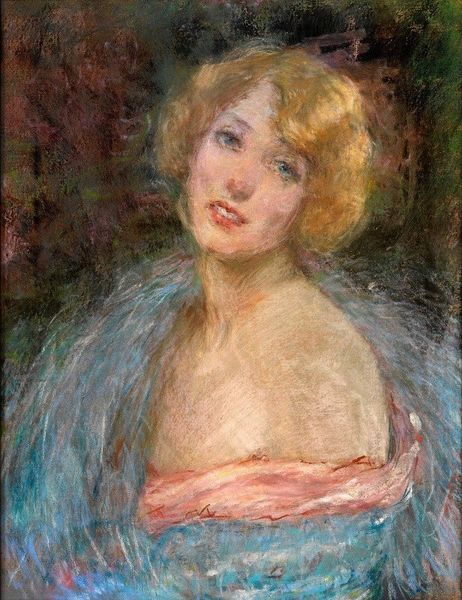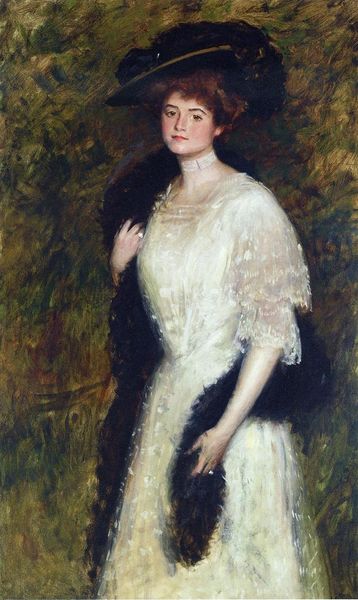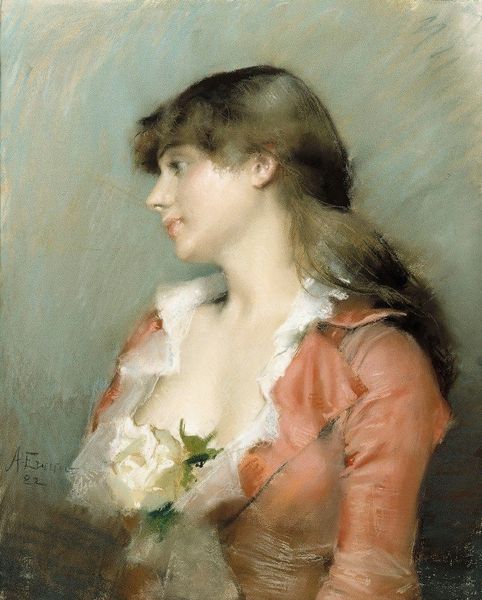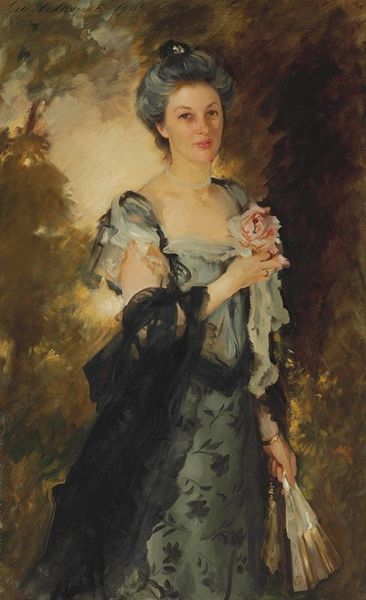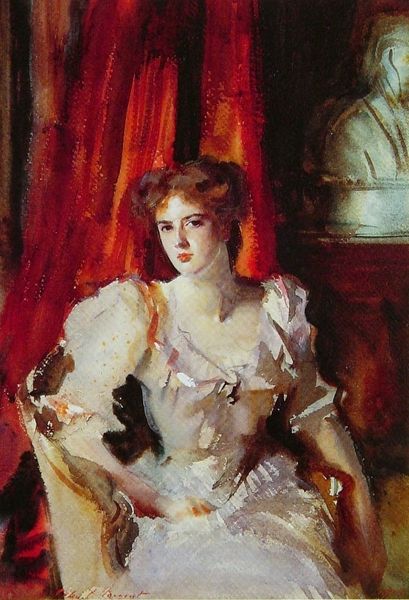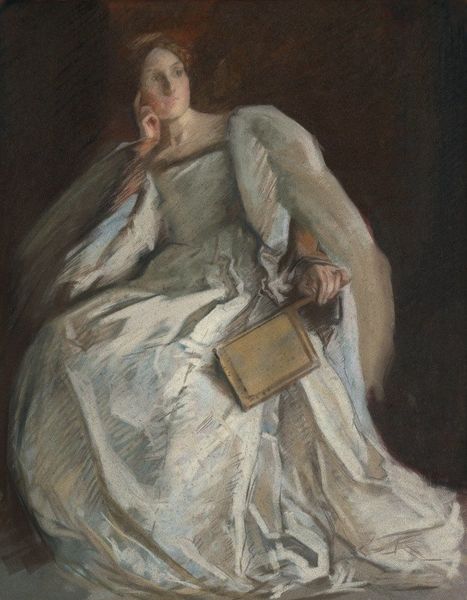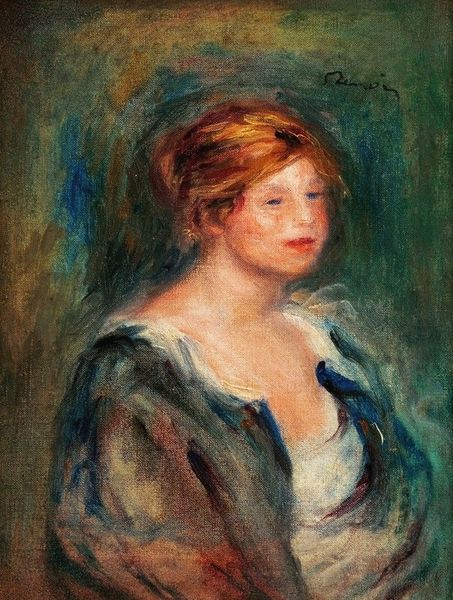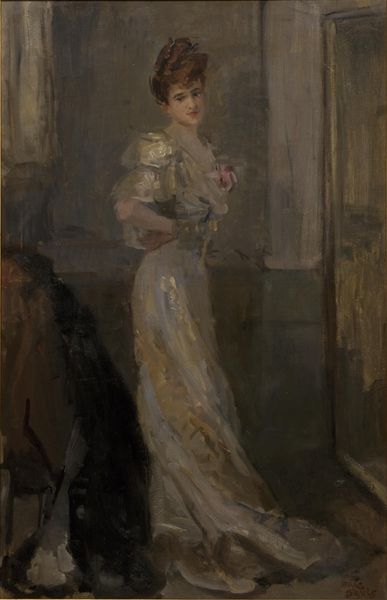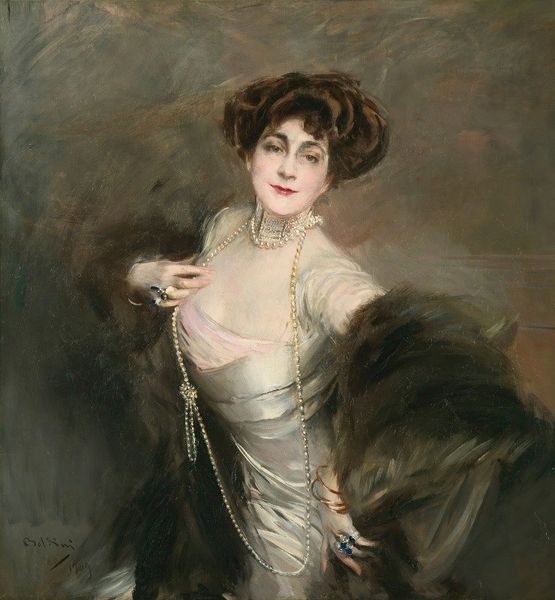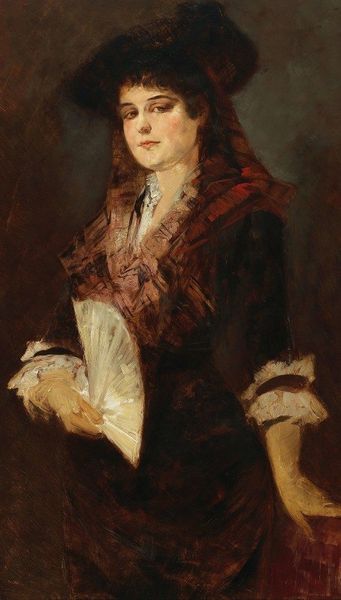
painting, oil-paint
#
portrait
#
figurative
#
painting
#
oil-paint
#
figuration
#
oil painting
#
expressionism
#
genre-painting
#
portrait art
Copyright: Public Domain: Artvee
Editor: So, here we have Lovis Corinth’s “The singer Frieda Halbe” from 1905, executed in oil paint. There's a sort of dramatic, almost theatrical quality to it, isn't there? How do you read this piece? Curator: What strikes me is how this painting operates as a document of its time, reflecting the burgeoning Expressionist movement and anxieties surrounding rapidly changing social roles, particularly for women in public life. Think about the rise of the 'New Woman' at the turn of the century. Editor: So, you're saying it's not just a portrait, but a commentary on social change? Curator: Precisely! The thick impasto, the somewhat jarring colour choices, and the sitter's direct, almost confrontational gaze, signal a departure from traditional portraiture, where women were often idealized and passively displayed. It becomes about psychological representation. What purpose is served when representing this particular female figure and how will that depiction affect those who encounter it? Editor: That makes sense. It feels less about capturing her beauty and more about conveying her presence and power, especially since she is a singer. Curator: Consider, too, the role of art institutions in legitimizing certain forms of representation. Corinth was challenging academic norms with his style. But it was within these very galleries and salons that the dialogue about what constituted “art” was occurring. Where was this artwork exhibited and how was it received by critics and the public? These details inform how we see the work now. Editor: It's amazing to think about the push and pull between the artist, their subject, and the art world itself. Thanks! Curator: Indeed! Considering these forces deepens our appreciation of the artist and reveals so much more about both the past and our present.
Comments
No comments
Be the first to comment and join the conversation on the ultimate creative platform.
